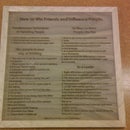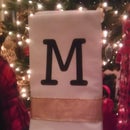Introduction: DIY End Grain Cutting Board (supplement)
First and foremost, I should say that I learned how to do this originally from taking a Techshop Workshop from the man who wrote this instructable: https://www.instructables.com/id/Making-an-end-grain-cutting-board-I-made-it-at-T/
This guy runs a Techshop Workshop for making end grain cutting boards, and having taken his workshop I highly recommend it:
WKS100: Two-Tone, End-Grain Cutting Board Workshop
This instructable should act simply as a supplement to his instructable. As a newcomer to end-grain cutting board making I made a few mistakes and observations that should hopefully make anyone else willing to tackle this project even more informed and prepared.
Full Discloser: I made it at Techshop and I highly recommend anyone near one to check them out.
Materials List:
Some nice pieces of wood (the cutting boards you'll see here are made with maple and cherry)
Glue: I used Titebond II. Just make sure it's food safe and will hold up ok when wet.
Clamps
Table Saw
Finishing Oil
Orbital Sander
Lots of sandpaper
Heat gun (not necessary unless in cold environment)
Step 1: Design and First Cut
1. Design your cutting board
CBdesigner is the tool that is awesome for taking the headache out of checkered end grain cutting boards. I would highly suggest fully mocking up your design in this program before buying a single piece of wood. It will save you a lot of hassle. Here you can see the design I was shooting for.
2. Cut the first set on the table saw
Word of advice: be absolutely meticulous with your table saw cuts. I made the mistake of applying too much pressure against the fence, which pressed the wood against the blade, which meant that I cut away more material than desired. This ended up creating small gaps when I fitted the pieces together, which I was luckily about to close when I glued it all together. More on that in the next step.
Step 2: Lots of Cutting and Gluing
Making an end grain cutting board is a two phase process. Phase 1 is cutting and gluing an edge grain board and Phase 2 is cutting that board apart to make the end grain board.
For both phases the glue job is exactly the same:
1. Get your hand on two pipe clamps to act as supports for the board
2. Prepare two scrap pieces of wood to act as buffer for your vertical clamps. These should have either masking or duct tape on them to prevent the glue from sticking to your board.
3. Apply a large, thick, even coating of wood glue. I used Titebond II, but Titebond III is supposedly the higher quality choice.
4. Set everything in place on your pipe clamps
5. Snug up your pipe clamps first to get your basic alignment set. The glue at this stage will make all the pieces slide around, so it's best to alternate between tightening and adjusting.
6. Before you get too snug, clamp the wooden blocks on.
Note: Here is where I ran into trouble. Because of my table saw mistake, I had small game in my pieces. To correct for this, I decided to just apply tons of clamping force. This worked, but it also bowed my board since I hadn't applied the vertical clamps yet. Unfortunately, I didn't notice this until the board had tried. It was slight, but when I placed my dried board on a flat surface (like the table saw work area), there was a distinct rocking of the board. I was able to correct for most of this by using the planar, but it was a pretty big headache. So, be sure to apply your vertical clamps early in your clamping process.
7. Double/Triple check that everything is aligned and snug. I basically kept tightening until I had glue squeezing out of every interface.
8. Wait for it to set. While this is happening, choose a good time to wipe/scrape as much glue away as possible. This will minimize the amount of work you'll have to do next.
Once your edge grain board is fully dried, depending on how careful you were you may need to plane/sand the faces to get rid of the glue or any peak/valleys created from an uneven glue-up.
The last picture in this step is what happened on my second (end grain) glue up of one of my board. To try and get rid of gaps, I applied a clamp horizontally down the center of the board. This, I found, actually began to separate the end of the board, shown in the picture. Now, I was applying way too much force, so this shouldn't happen, but I'm pointing it out here so makers can learn from my mistakes.
Step 3: Sanding and More Sanding
When your second glue up is complete, your board will have lots of glue and maybe a few burn marks from the table saw (the cherry I used was particularly prone to burning). For sanding, first I used the belt sander to do the coarsest parts first. I had some unevenness to deal with, so this took about 1/2 hour per board (wear eye, ear, and breathing protection!).
After the belt sanding was done, I busted out the orbital sander and worked 80 grit, 220 grit, and then 320 grit into the boards. This made them incredibly smooth, but ti took a long time. I'm sure there are other ways, but when I make another one, I'm going to consider using the shopbot to level everything out.
Step 4: Finishing Oil
Since these are cutting boards and are meant to be used for food, be sure to use a food safe oil. Anything that saws "butcher block" on it should be great for this purpose. Now, the directions said that the oil should be warm when applied, but since I did this in winter, I also used a heat gun to warm up my boards as well. I did this because the goal here is to get the boards to absorb as much mineral oil and wax as possible. Cold boards mean your finishing oil will cool off quickly not absorb deep enough.
I should also mention, this is when all that sanding pays off. My jaw actually dropped when I saw how beautiful the boards turned out.
Be sure to apply enough coats so the boards, while warm, just won't absorb any more oil/wax.
Enjoy!

Participated in the
Holiday Gifts Contest













